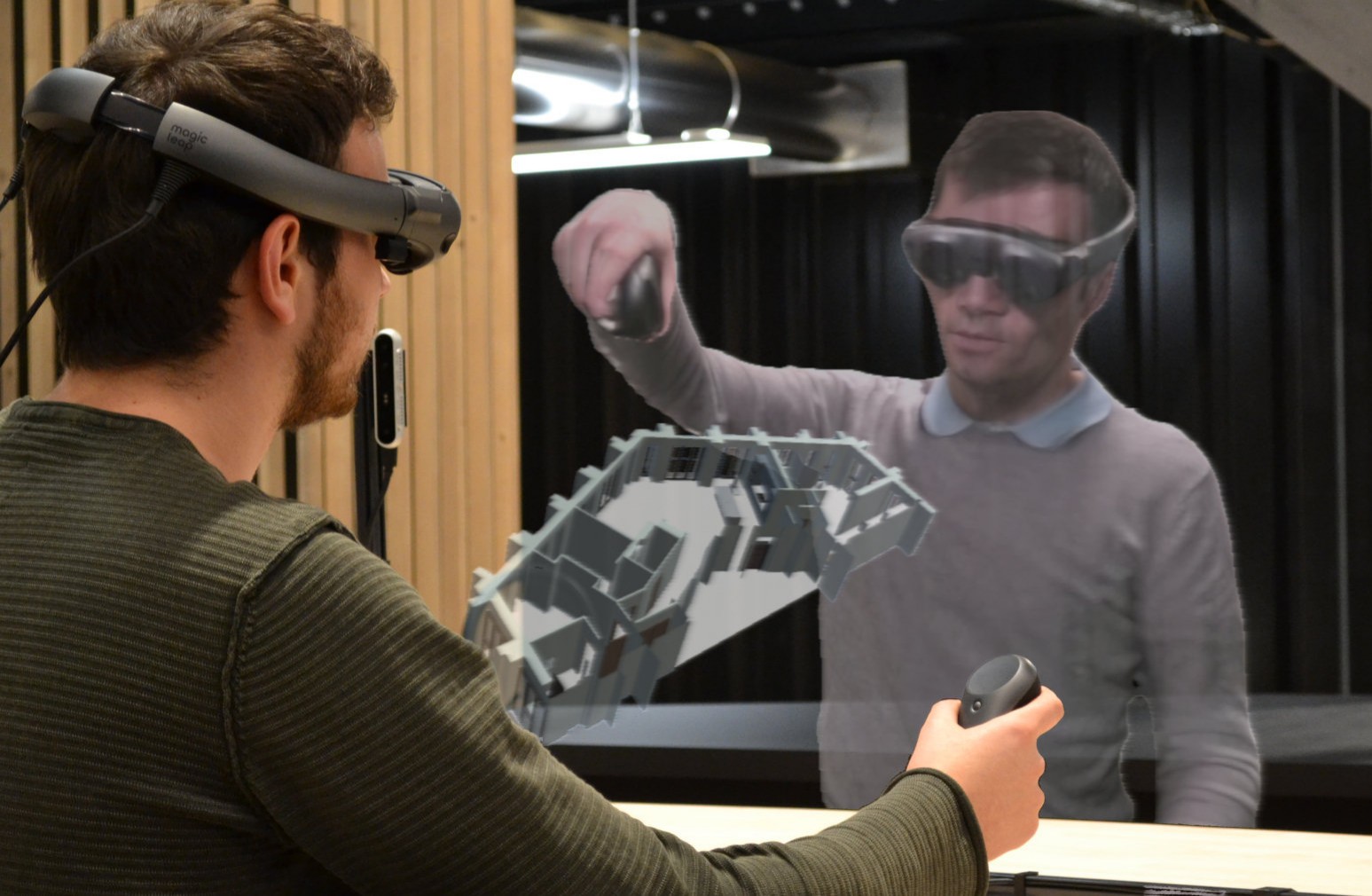 EMERGING TECH
EMERGING TECH
 EMERGING TECH
EMERGING TECH
 EMERGING TECH
EMERGING TECH
Magic Leap Inc., the company best known for its magical augmented reality glasses hardware and demos, announced Thursday it has acquired the spatial co-presence company Mimesys, a maker of telepresence collaboration software for enterprise users.
With its platform, distant users can interact with one another with fully realized holographic images of one another as 3-D people standing around in a room. The platform also allows for those people to interact with rendered objects in real time, together, permitting real-time communication and collaboration on projects.
“Spatial Computing is going to change the way we think and work, leading to more collaborative, physically active and magical experiences.” said Remi Rousseau, chief executive of Mimesys.
The platform brings together a concept portrayed on television shows and fiction as a way to bring people who are far apart into the same room. An empty meeting space can be suddenly filled with holographic people, all of whom can see each other, interact with 3-D objects and even get to experience the expressions and body language of co-workers.
This is a step up from on-the-phone type meetings in front of computer screens or even video teleconferencing because the technology puts fully volumetric people into a space nearby. A 2-D image on a screen can convey quite a bit with expression and body language, but it’s not quite the same as having someone in the same room, looking at the same thing, where subtle movements such as gazes can be part of the collaboration process.
“Concepts of communication imagined in science-fiction in the past 30 years are becoming now technically possible,” said Rousseau. “We had the chance to work with Magic Leap Spatial Technology early on, were impressed by their technology and excited by the possibilities of co-presence on the platform.”
Both virtual reality and augmented reality — and their hybrid sibling mixed reality — are sought after as an enterprise solution to collaboration. For example, Seattle-based Visual Vocal and IrisVR Inc. both create business-centric VR environments to allow for distant collaboration. On the AR front, Scope AR and Upskill have developed platforms that allow experts in the office to collaborate by “drawing on” the vision of skilled workers in the field.
Estimates and predictions vary, but a report from ResearchAndMarkets.com revealed that the AR market in 2018 was valued at $11.14 billion and is predicted to exceed $60 billion by 2023 globally. This is larger than the current VR market, which the same report estimated $7.9 billion in 2018 and predicted $34 billion by 2023. Much of AR’s dominance, the report states, would be owed to smartphones (which can act as AR conduits) and the proliferation of new AR hardware, such as the Magic Leap One and Microsoft Corp.’s HoloLens.
Omar Khan, chief product officer at Magic Leap, said he believes that this partnership will lead the company to have the best in class and most robust, true spatial, volumetric co-presence platform on the market.
“As we expand the spatial computing ecosystem integrating a best in class communication and collaboration solution helps us to further fulfill the promise of the next computing platform,” said Khan. “The spatial co-presence platform the Mimesys team has created is remarkable.”
Magic Leap is an augmented reality darling that has raised more than $2.6 billion in funding.
The company’s AR goggles, the Magic Leap One platform, shipped as a developer edition for $2,295 in August. Since then, numerous companies have developed software and services for the goggles — including Mimesys, which released a version of its own software that works on the Magic Leap One.
The companies did not release details about the deal or how much Magic Leap paid for Mimesys at this time.
Support our mission to keep content open and free by engaging with theCUBE community. Join theCUBE’s Alumni Trust Network, where technology leaders connect, share intelligence and create opportunities.
Founded by tech visionaries John Furrier and Dave Vellante, SiliconANGLE Media has built a dynamic ecosystem of industry-leading digital media brands that reach 15+ million elite tech professionals. Our new proprietary theCUBE AI Video Cloud is breaking ground in audience interaction, leveraging theCUBEai.com neural network to help technology companies make data-driven decisions and stay at the forefront of industry conversations.